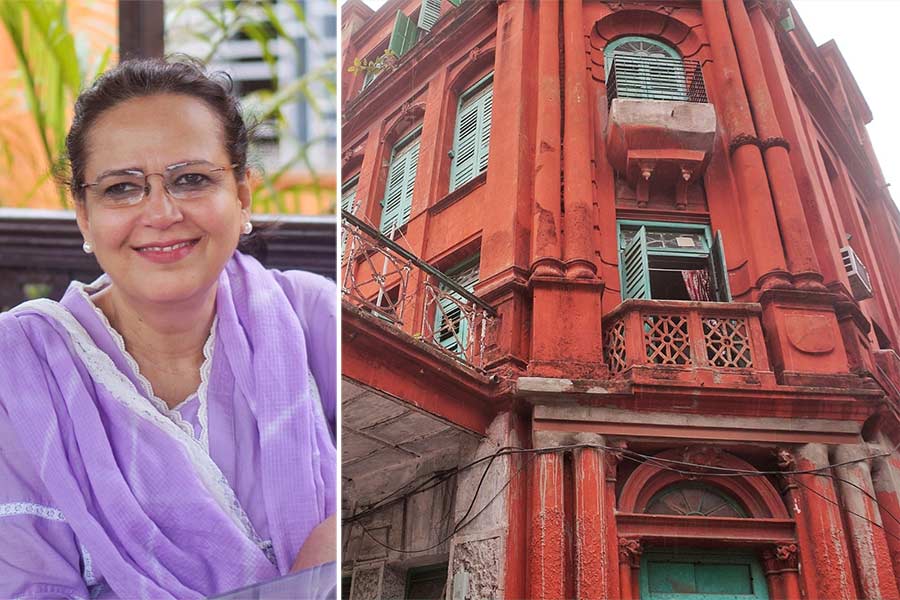Instagram is fraught with cinematic videos of Kolkata, juxtaposed with Mirza Ghalib’s poetry on the city. But how did the master of Urdu poetry forge an immortal relationship with the City of Joy?
This is the subject of Rakhshanda Jalil’s next project. An exhaustive travelogue which documents Ghalib’s journey from Delhi to Kolkata and back, in the late 1820s.
Last week, the author, translator and literary historian was in the city for a session with Prabha Khaitan Foundation on her life and work. Jalil took time out to see Kolkata from Ghalib’s lens, visiting all the alleys and structures that were integral to the poet’s stay in the city. My Kolkata joined her and Calcutta Walks founder Iftekhar Ahsan for a walk through Ghalib’s Kolkata, discovering new dimensions to the beloved Urdu poet.
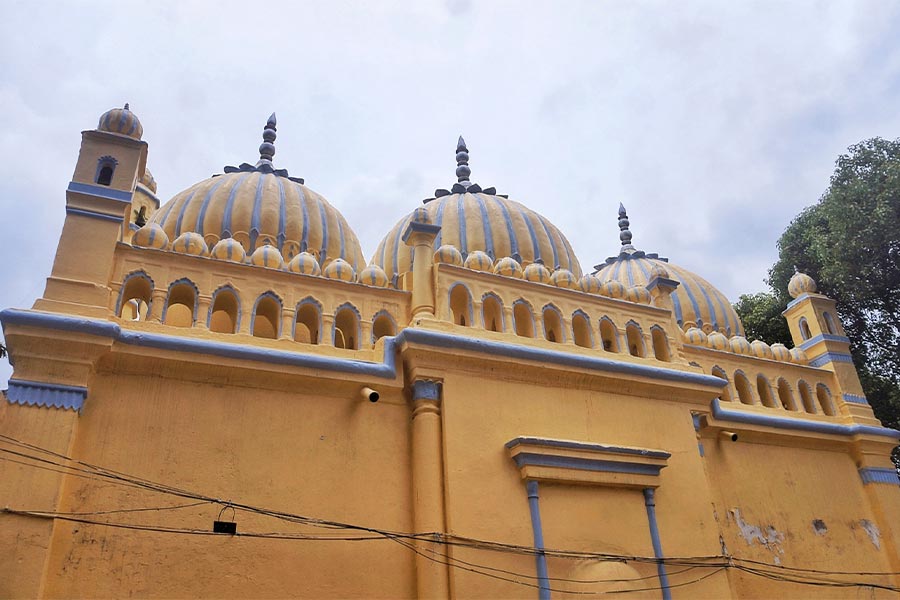
The Kathal Bagan Mosque held great significance to Ghalib
“A lot of people know about Ghalib’s love for Kolkata, and his shers about the city have been frequently quoted. But there were multiple, complex reasons that brought him here,” said Jalil.
When the poet left his home in Delhi in November 1825, one of his principal motives was to enhance his pension of Rs 62 and 50 paise by speaking to a representative of the imperial capital, which was in Kolkata back then. “He felt he was cheated of his fair share, and entitled to more. But despite his best efforts, his pension stayed the same till the end of his life,” Jalil added. Another reason to leave Delhi was his mounting debt, where the fear of moneylenders often led him to not leaving his home for weeks.
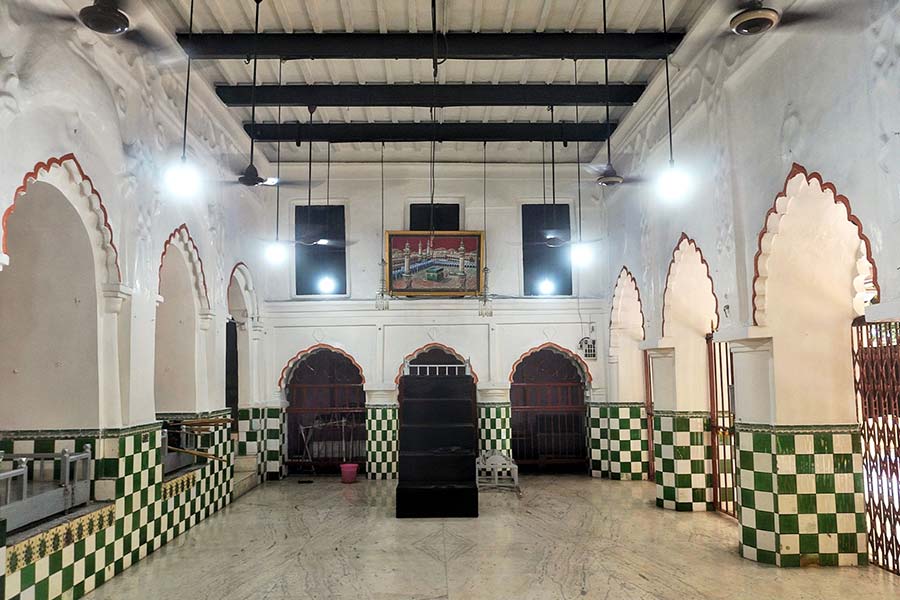
The family looking after the mosque today continues to share stories from Ghalib’s time in Kolkata
Upon seeking the Delhi representative for his pension, Ghalib found him to be in Bharatpur. By the time Ghalib reached Bharatpur, the officer had travelled further east. This cat-and-mouse game led him to Lucknow, and finally Kolkata. “At every point, Ghalib found patrons, who provided him monetary help or nazrana to keep him going. Every bit of his journey is documented. I will write about the compulsions behind this journey, his experiences along the way, the different modes of travel (on horseback, on cart and on a boat over the Ganga), the different cities he stopped in, the people he met, and the detailed letters he wrote to his friends back home,” Jalil explained.
Ghalib in Calcutta
‘Ghalib reached Calcutta in February 1828, a little over a year after leaving Delhi. Raja Sohan Lal helped him find comfortable living quarters in Mirza Ali Saudagar’s haveli in Simla Bazar – at a rent of Rs 10 a month. Ghalib called on the Chief Secretary, Andrew Sterling and on Simon Fraser, the Assistant Secretary. These meetings were cordial and Ghalib’s case was taken up at the Governor-General’s Council where it was decided that the matter should be taken up for decision through the British Agent in Delhi – as this was procedurally the correct channel. This suited Ghalib as the Agent in Delhi, Sir Edward Colebrook, was known to him. Ghalib went to the post office and at a cost of Rs 10 mailed a mukhtarnama, or power or attorney to his lawyer, Pandit Hira Lal in Delhi – with instructions to secure the appropriate recommendations. As he waited for a reply by return post, Ghalib lived the good life in Calcutta. The Nawab of Banda had sent him an additional loan; he had comfortable lodgings in a good locality, three servants, and one palanquin bearer. To supplement his resources, he sold off his horse for Rs 150 and fixed a budget of Rs 50 per month for himself.’
— Excerpt from “Ghalib in a New World Order”, Love in the time of Hate: In the Mirror of Urdu, Simon & Schuster, May 2024 by Rakhshanda Jalil.
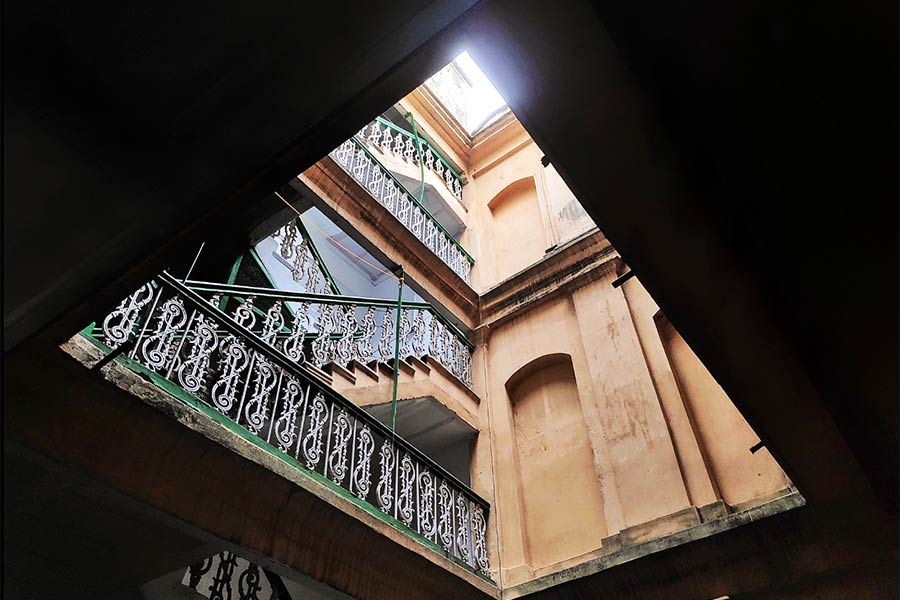
The interiors of Ghalib’s Kolkata home
The walk through Ghalib’s Kolkata resulted from a random Facebook message that Ahsan sent Jalil, offering to show her around the city. “We’d never met before, but I asked if he could take me to the places Ghalib visited in the city and he agreed,” she smiled.
Ahsan showed her Kathal Bagan Masjid in Entally, and Ghalib’s rumoured home in Ramdulal Sarkar Street. “Ghalib was a great man, but also consumed with a sense of importance. He loved the mangoes of Malda, the iconic Kolkata paan, the telegram and printing press (which hadn’t reached Delhi yet), and the women of this city. But his pride also made his time here difficult, and he frequently got into arguments,” Jalil said.
‘A mushaira (poetic soiree) on the first Sunday of every solar month was the norm in Calcutta. Ghalib was invited where he recited two ghazals in Persian. Ghalib has left detailed accounts of his stay as well as the mushaira he attended; he estimated almost 5000 people were present when he recited his ghazals. Imagine his surprise when some among the audience criticized the construction of some of his Persian ghazals. Always touchy and temperamental, Ghalib was stung by what he thought was completely unwarranted criticism – that too of his command over Persian! An unseemly controversy ensued and cast a long shadow over his stay in Calcutta. Thirty years later, Ghalib would remember the controversy and spit fire at those who had the temerity to find faults in his ‘mastery’ over Persian. Ghalib was, however, advised to curtail the unspooling controversy. He wrote Baad-i Mukhalif (An Adverse Wind) – ostensibly an apology, it still left no doubt as to who was right!’
— Excerpt from “Ghalib in a New World Order”, Love in the time of Hate: In the Mirror of Urdu, Simon & Schuster, May 2024 by Rakhshanda Jalil.
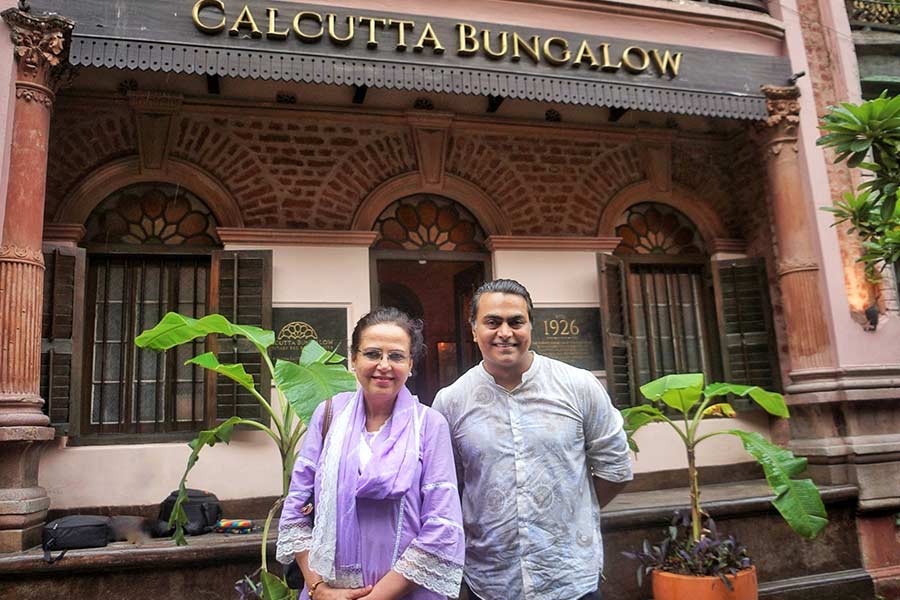
Calcutta Walks and Calcutta Bungalow founder (right) Iftekhar Ahsan spun vibrant stories about Ghalib’s time in Kolkata while guiding Jalil through the city
Although Ghalib’s life has been extensively documented in Urdu, Jalil’s objective is to introduce this pivotal journey to new readers. “Several accounts of Ghalib’s Safar-e-Kalkatta exist in Urdu, but it would be very interesting for English readers to discover it too,” she signed off.
